Marcia Thornton Jones's Blog, page 15
October 8, 2024
True Colors by Jane Kelley
This is my husband, Clifford Lee Johnson III.

He is playful, creative, exuberant, wildly imaginative, and full of JOY!
If you meet him, he might look like this.

No, he isn't a waiter! He's a theater producer -- on his way to work. Some of his most important business conversations happen at galas and other social events. He has to look serious and successful.
We are all like leaves. The chlorophyll that leaves need to convert the sun's energy into food for the tree makes leaves appear green. Only when autumn comes and their work is done are they allowed to show their real colors. The bold reds, golds, oranges, rusts make even a day without sunshine glow.
Our work selves also mask our true colors. When we think of our creative work as a dutiful slog, we deny ourselves and those around us the chance to bring more joy into our work and into the world.
Hmm. Is that why my husband plans to get a brightly colored tux?
Jane Kelley is the author of many middle-grade novels -- and the proud partner of Clifford Lee Johnson III.
Most of the year, these leaves are green because of the chlorophyll they use to absorb energy from sunlight during photosynthesis. The leaves convert the energy into sugars to feed the tree.
As the season changes, temperatures drop and days get shorter. Trees get less direct sunlight, and the chlorophyll in the leaves breaks down.
The lack of chlorophyll reveals yellow and orange pigments that were already in the leaves but masked during the warmer months.
October 3, 2024
Color Me RED!
Hello! Today is a red-letter day...because EVERY day is a red-letter day! (Just ask a dog!)
See below a poem from my ArtSpeak! RED year (2020)...which is part of an ongoing weekly-poems-inspired-by-art project I've had going since 2015.
Each year I choose a theme, and 2020 is the only year (so far) I selected a COLOR. What a fun year! Click here to view the padlet gallery and read them all!

Because Every Day is a Red-Letter Day
wake up
wake up
a new day is here
time to wiggle. wander
wonder. wag
chew through the blues
new day
new you
- Irene Latham
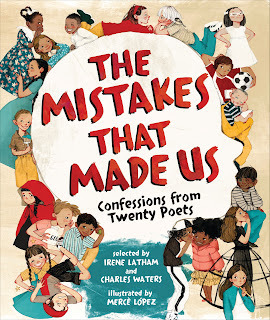
Today truly is a red-letter day because I can now call myself a children's poetry anthologist, as the anthology The Mistakes That Made Us: Confessions from Twenty Poets, poems selected by Irene Latham and Charles Waters, illus. by Mercè López is out in the world finding readers. Woohoo! I hope you'll check it out...you will love the real-life stories from these brave poets!
Finally, I offer you an autumn poem, since autumn, in my mind, is THE season of color. Thanks so much for reading!

with a fox for
a soul, it blazes all hours
this autumn maple
- Irene Latham
October 2, 2024
Middle Grade Reading for October
Middle Grade Reading for October
With the arrival of fall, it's time to review a new group of middle grade novels!
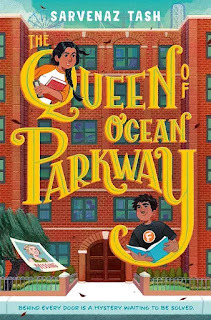
Sarvenaz Tash's new novel is called The Queen of Ocean Parkway. I asked how she created her protagonist, Roya, and she said, "I was inspired by my neighborhood, which I share withRoya! I also thought a lot about Harriet the Spy when I was writing this book,particularly about how that book made me feel as a kid.
She added: "As a shy suburban kid myself, Harriet, with her curiosityand unapologetic personality, living in a NYC apartment building and having somuch access to secret parts of the building and its tenants was one of themostly wildly thrilling concepts I had ever read. I really wanted to try to capture that feeling of adventureand agency too, with Roya being the super’s kid in her Brooklyn apartmentbuilding—and making a secret podcast about the tenants to boot."
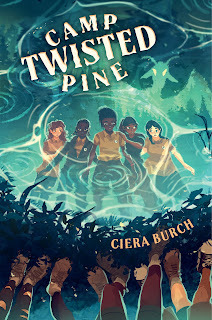
Ciera Burch is the author of the new novel Camp Twisted Pine. I asked what inspired the novel, and she said, "A few things inspired me! The mostprominent was probably my desire to go to a sleep away summer camp as a kidthat was never fulfilled. At least, not how I wanted it to be."
She continued: "My mom wasn’t a fan of sending meaway for weeks at a time with strangers, but my school had a week-long fieldtrip for the entire 6th grade class to a place called Mt. Misery up in the PineBarrens and the memory of that, my one and only camping experience, really hada lasting effect!"
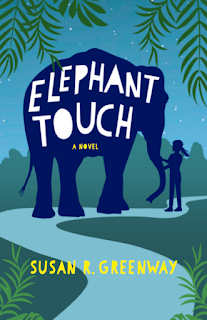
Susan R. Greenway's new novel is called Elephant Touch. When I asked about the story behind the novel, she said, "On a visit to see elephants in Thailand several yearsago, I received a phone call from my sister in California that my mother hadpassed. As I cried, three elephants behind me in a fenced corral came towardsme. One of them put its trunk on my shoulder. I was profoundly touched."
She added: "That was the beginning of my love for elephants and desireto find out more about them. As I read more about Asian elephants, I was evenmore impressed with their magnificence. But I also found out how frequently andhorribly they’ve been abused. Fortunately, there are some wonderful sanctuariesthat house elephants needing a safe home."

Finally, Michael P. Spradlin is the author of the new novel Rise of the Spider. In our Q&A, he said, "Most of my historical fiction involves young people with a front-row seat to ahistorical event. My goal is always for readers to imagine themselves in thesesituations and think about how they would respond."
He continued: "Inthe case of Rise of the Spider, I wanted the same approach, but with a longerview. How did the Nazis’ rise to power affect a young person during that time? Andhow was it the same and different for each of them?"
Thanks so much for reading.
--Deborah Kalb
October 1, 2024
News
Today is release day for The Mistakes That Made Us: Confessions from Twenty Poets, selected by Irene Latham and Charles Waters, illustrations by Mercè López (Carolrhoda, 2024).
Praise for The Mistakes That Made Us :"An anthology packed with a broad spectrum of human emotion and experience."Publisher's Weekly ★ STARRED REVIEW "Charming and insightful...A gentle reminder of the stepping stones making up the path to growth, discovery, and creativity." - Booklist ★ STARRED REVIEW “This accessible, well-tuned collection of poetry will reassure and delight young readers in equal measure.” - School Library Journal "Comforting reminders that nobody's perfect, infused with lessons large and small." - Kirkus A Junior Library Guild selection
September 30, 2024
Going Deeper on Plotting (Holly Schindler)
Coming out of the pandemic, my career was not exactly what I wanted it to be. I'd subbed a couple of books, neither of which were picked up by agents. What was wrong? Were my numbers stinky? Not enough followers? I'd won awards. I'd gotten starred reviews. And yet...
Crickets on the subs.

I decided it was time to stop guessing. Start investigating. I snagged a few craft books.
One of the first books I bought was Maass's The Breakout Novelist. (I know--I can't believe I hadn't picked it up before.) Anyway, Maass basically says that if you aren't where you want to be as a writer...
it's your fault.
I mean, not in those terms, exactly. But that's what he says. It has nothing to do with numbers or awards or how many agents you parted ways with.
It's you.
And let me tell you, I breathed an enormous sigh of relief.
If it's my fault, that means I can do something about it.
So I signed up for webinars and online courses (yes--even after already having completed a masters in English). I worked on plotting. I dug deep. And then still deeper. I got so into craft, I actually didn't write anything the first six months of this year.
I'm now about to rewrite one of those books that agents did pick up. There's no telling what will happen with it.
But whatever it is, I feel, far more than I ever have before, that this book's destiny is in my hands.
And it's a good feeling indeed.
~
Holly Schindler is the author of the MG The Junction of Sunshine and Lucky.
September 28, 2024
Deep, Deeper, Deepest
by Charlotte Bennardo
The theme is deeper....
Makes me think of
 Photo by Blaque X: https://www.pexels.com/photo/underwat...
Photo by Blaque X: https://www.pexels.com/photo/underwat...Oceans. I'm a water person; I love swimming, the beach, my pool. Besides a good swim, I love to snorkel (haven't learned to scuba-yet). I love going deeper, seeing what fish and plants and coral and other treasures are down there just waiting to be found.
Writing is kind of like swimming. You can stay on the surface, seeing what's right there, your story's basics. But a writer needs to write more than what's apparent in front of the character. We need to go deeper into characters, plot, sub-plots, conflicts, themes. It's not enough to present a storyline with characters doing things. What needs to be deeper:
what are the reasons for the conflicts what traits, both minor and major, do the characters (main and secondary) have that affect the storyhow does a detailed setting affect the mood, the plot, the climaxhow do secondary characters affect the plot , the main character and the conflictsis the research deep enough so that there are no glaring errors or impossibilities, even if your work is fictionhave you paid attention to the minor details, like timelines, in your editingI could find more ways to go deeper, but you have the idea.So don't just skim the surface-
 Photo by Karola Siimson: https://www.pexels.com/photo/man-ridi...
Photo by Karola Siimson: https://www.pexels.com/photo/man-ridi...
Charlotte writes MG, YA, NA, and adult novels in sci fi, fantasy, contemporary, and paranormal genres. She is the author of the award-winning middle grade Evolution Revolution trilogy, Simple Machines, Simple Plans, and Simple Lessons. She co-authored the YA novels Blonde OPS, Sirenz, and Sirenz Back in Fashion. She has two short stories in the Beware the Little White Rabbit (Alice through the Wormhole) and Scare Me to Sleep (Faces in the Wood) anthologies. Having finished her MFA, she's applying what she learned and is working on several children's and adult novels, along with some short stories. She lives in NJ with her family and her floofy cat. When they trimmed the backyard tree, the crazy squirrel couple had to move out, but she is happy to report she has a new squirrel tenant along with a rabbit (Bad Bunny).
September 24, 2024
Interview With Jessica Vitalis, Author of Unsinkable Cayenne
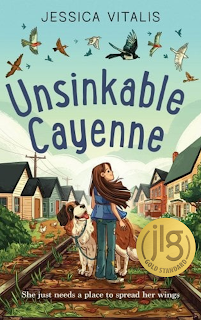 Thanks for joining us at Smack Dab, Jessica! Tell us a bit about UnsinkableCayenne.
Thanks for joining us at Smack Dab, Jessica! Tell us a bit about UnsinkableCayenne.It’s a pleasure to be here! UnsinkableCayenne is a historical novel in verse set in 1985 (yes, that’s historicalto modern middle grade readers!) It follows twelve-year-old Cayenne, who hasspent her entire live traveling the country with her hippy parents in asticker-covered van. When they finally settle down in a small town in Montana,she vows to make friends with the popular kids, catch her rich crush’s eye, andhide her strange family. But her teacher’s obsession with the newly discoveredTitanic wreckage reveals startling parallels between the social strata aboardthe doomed ship and Cayenne’s own life, forcing her to evaluate who she reallyis––and who she wants to be.
I love novels in verse. For me, they kind ofstrip away all the pages of description and let the emotionality of a storyreally resonate. Why were you drawn to writing a novel in verse? What’s thedrafting process like for a novel in verse?
I wrote quite a bit of poetry in high schoolbut never thought of myself as a poet; in fact, when verse novels first tookoff, I was completely in awe of the form and distinctly remember declaring thatI could never write a novel in verse. Unsinkable Cayenne actuallystarted as a short story I wrote for an anthology about first kisses; when Isat down, the story came out in free verse (mostly non-rhyming poetry withoutset rules). My editor passed on the anthology but said she’d be interested in mystory as a novel. I set aside my fear and did a deep dive into verse novels,reading (and rereading) everything I could get my hands on. Once I realizedthere wasn’t some secret set of “rules” guiding verse novels that I simplydidn’t understand, the project became a lot less intimidating. From abig-picture perspective, the writing process was identical to writing in prosein the sense that there needs to be a compelling plot and a solid characterarc. The main difference is that writing in verse allowed me to spend a lotmore time exploring the image systems and poetic techniques designed to evokeemotions in readers, which was a fun challenge.
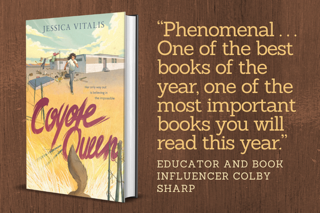
I love the Titanic angle–linking it to Cayennein a strong way (Unsinkable–it’s right there in the title), but I also lovedthat you included some of the survivors. Showing that it’s possible to make itthrough something disastrous. Where did the Titanic angle come from?
The short story I mentioned earlier was basedon a crush from my childhood in the 1980s. When I set out to turn the storyinto a novel, I wanted to keep the flavor of the story (roller skating, PizzaHut, perms, etc.) but conventional wisdom holds that there has to be a reallycompelling reason to make a story historical. Since friendship, first crushes,and fitting in could easily be contemporary, I knew I had to find a historicalanchor. My very first Google search revealed the discovery of the Titanic wreckagein 1985, and the theme fit so perfectly with the story I was trying to tell interms of exploring the impact of socio-economics on the middle schoolexperience that I never looked back.
Lyrical writing abounds here—to a great extentbecause novels in verse lend themselves to it. Same favorites: “maybe is thesound my heart makes” or “the sour taste of never.” Does lyrical writing comenaturally? How do you strike a balance between making a book pretty and slowingit down?
First of all, thank you! I do think I tend tohave a fairly lyrical writing style, so that was useful in making thetransition to verse. In terms of pacing, I think it’s critical to have a goodsense of story structure (developed by being an avid reader and intentionallystudying craft); beyond that, feedback from critique partners and my editor wascritical in getting the balance right. Although I’m typically an underwriter,we actually ended up cutting dozens of poems in the later stages of thisproject.
Without spoiling anything, tell us a littlemore about how you arrived at the ending.
The hallmark of middle grade books is that theyalways end on a hopeful note, but I didn’t want to write something that wouldgive kids false hope or suggest that they are somehow responsible for, or ableto influence, their parents’ decisions. The very first draft of this novel hada “happily-ever-after” ending, and I think I knew even as I was drafting thatit wasn’t right for the story I wanted to tell. In the end, I chose to focus onCayenne’s emotional journey rather than external factors that are entirely outof her control.
What’s next?
Good question! I have several projects in theworks, but after publishing 4 novels in 4 years, I’m taking a bit of a breatherand focusing on getting the books I have out into the hands of young readers. Ihope to do lots of school visits, conference, and festivals in 2025, sohopefully I’ll have a chance to meet you and many of your readers IRL!

Where can we find you?
The best place to find me right now is at www.jessicavitalis.com; I’m alsosemi-active on Instagram and Facebook at @jessicavauthor. Thanks for having me!
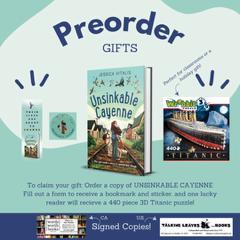
September 23, 2024
When Deep is Up: Smack Dab in the Imagination by Dia Calhoun
Rereading The Passion of the Western Mind: Understanding the Ideas That Have Shaped Our Worldview by Richard Tarnas, I was struck by his observation about the great shift in the cultural imagination that came from Copernicus' heliocentric model. In the geocentric system, the earth was the dead center of the universe. In circling spheres ever more distant--moon, sun, planets, fixed stars, Primum Mobile, and finally the divine in the Empyrean. Only hell, inside the earth, was further from the divine. Copernicus, by tossing the earth up into the sky, elevated the earth to a "heavenly body."
Sometimes going deeper is going the opposite direction you might think. Try that when you write.
September 15, 2024
The Shadows that Speak to Us
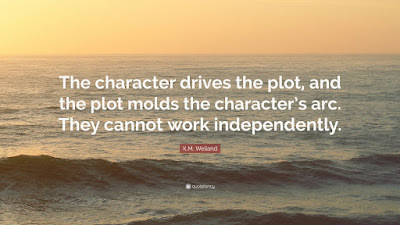
Last time, I highlighted the writing class sponsored by LorinOberweger and Free Expressions, The Breakout Novel Intensive, exploring theprinciples outlined in Donald Maass ‘ book, Writing the Breakout Novel(2001). As a story nerd, I thrive on taking deep dives into the storyengineering process, and this is as deep as it can get. This time I wantto sing the praises of K.M. Weiland’s course, Shadow Archetype Course. This course six powerful archetypal character arcs and the passive/aggressiveshadow archetypes that must be overcome to reach positive transformation.
As Weiland offers in the first class:
“Good art both mimics and influences life. This is nevermore true than of storytelling and its direct mimicry of life’s narrative. Asaudiences, we seek stories not as escapism but more pertinently as wisdom—as amirror for our own experiences, a possible context through which we mayrecognize ourselves and make sense of our own existence. If you haveexperienced a book or a movie (or even a song) that has changed yourperspective about yourself or the world, then you know the power of story. Buteven simply as entertainment, stories only engage audiences when they are ableto tap the most important and primal patterns of life.
These patterns are archetypes.”
Having studied Joseph Campbell’s iconic hero’s journey, and ChrisopherVogler’s The Writer’s Journey: Mythic Structure for Structure – which, by theway, is also offered as a class through Free Expressions – I delighted in this deepstudy into character archetypes. AsWeiland explains, archetypes are universally recognized symbols arising from acollective context. They span the globe, reach through history, and dig deepinto our individual psychological experiences.
In short, archetypes are powerful.
Her course builds upon the concepts she explores in herbook Writing Archetypal Character Arcs: The Hero's Journey andBeyond. Called Life Arcs, the study is centered upon sixtransformational archetypes that “signify the main initiations of the humanlife cycle. A character arc is thechange initiated in the protagonist) by the external events of the story. Thecharacter starts in one place (mentally, physically, emotionally, and/orphysically) at the beginning of the story and arcs into a different place bythe end. This is the Life Arc.
For example, I paid particular attention to the archetype,The Maiden - Coming of Age. As Weiland explains, “The first of the two youthfularcs, the Maiden is associated with puberty, sexual awakening, andindividuating into one’s own personal authority. She arcs from Innocent toIndividual. The Maiden’s journey begins with the Lie (the limited mindset withwhich the character begins the story ) and transforms into her Truth (representing the more expanded perspectiveinto which the character will be arcing. This Truth won’t necessarily representultimate truth, but simply a more effective alternative to the Lie.) Forexample, Submission(Lie) vs. Sovereignty(Truth). “Submission to authority figures is necessary for survival.” versus“Personal sovereignty is necessary for growth and survival.”
By the way, be sure to check out YA author Holly Schindler’s exploration intoplotting through backstory series on her newsletter, It's My Story & I'm Stickin' With It. It’s an excellent companion to Weiland’scourse, focusing on plotting strategies. This includes:
Plotting Through Backstory (Review So Far - Post #5)
The Four-Act Structure (Plotting Through Backstory #6)
The Inciting Event (Change is Afoot - Plotting Through Backstory #8)
As Weiland reinforces throughout her course, and her books, powerful character arcs create powerful stories!
Thank you for being a part of my journey!
-- Bobbi Miller
September 12, 2024
DIG DEEPER by Darlene Beck Jacobson
Deeper is the perfect metaphor, word, image, for a writer to contemplate. Whenever we write, we want our words to evoke images, feelings, and ideas that transcend the page.
When we have a first draft of a story, with all the basics of setting, characters, conflict, etc the real work is just beginning.
I'm talking about diving deeper into what motivates our characters and makes them do what they do.

Remember how, as a child, whenever we would dig a hole in our backyard, we'd imagine all the unseen treasures we'd find if we just kept digging? Our stories are like that. What ends up between the pages of a book is our best effort after digging deep.
I wonder how those stories might change if we dug even deeper. Is there a limit to how far we can go?
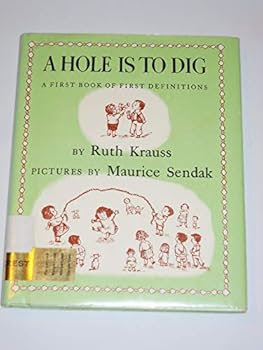
While a hole symbolizes endless possibilities, it can also show us that maybe something is missing and we need to search deeper to find what we are looking for.
A HOLE IS TO DIG and to search for the deeper, most important way to tell our story.
How deep will you go to discover what your character wants you to know?
Darlene Beck Jacobson loves discovering what lies beneath the surface. Digging in the sand at the beach is one of her favorite places to go deep. She writes her stories from NJ. Visit her blog at:



